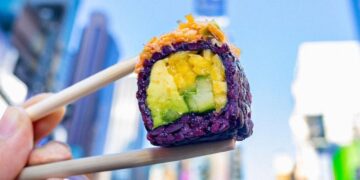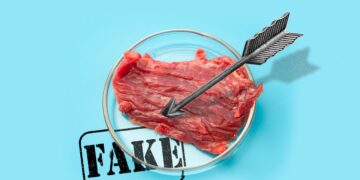[ad_1]

Dwelling brew guru John Palmer – the writer of the bestselling How to Brew – guides you thru elements of the artwork of brewing higher kettle sours after which dishes up a recipe for one in every of his favorite types. His Zilwaukee Bridge Bruin is a departure from his Tittabawasee Brown Ale in Methods to Brew and is known as after a concrete bridge additional downstream because it goes previous Saginaw Steel Castings Operations of Common Motors in Michigan. In each concern of Beer & Brewer John dives deep into a specific side of brewing higher beer and recurrently supplies one in every of his recipes. Subscribe to the magazine here.

It’s fascinating to me how rapidly kettle sours have develop into mainstream for therefore many residence brewers! I used to assume bitter beers had been for the elite, the daring and the sagacious! For these of you who’ve by no means carried out a kettle bitter, the method is pretty easy:
- Mash and lauter (or BIAB) your grist as traditional.
- Carry the wort to a boil for five to 10 minutes to kill off undesirable souring micro organism which will have survived the mash. Don’t add hops.
- Chill the wort to 38 to 43°C. Room temperature will even work, but it surely works higher hotter.
- Pitch your micro organism tradition to the kettle.
- Enable the wort to bitter for twenty-four hours. Attempt to keep the 35 to 40°C temperature.
- When the wort has reached the specified sourness (pH), resume regular brewing operations (deliver it to a boil and do your hop additions).
Hitting a bitter observe
After all, there are a number of concerns that should be understood with the kettle souring course of, however total, it isn’t difficult. The brief boil is an non-compulsory step for a lot of brewers, however until you will have carried out the identical recipe and the identical process a number of occasions, I might not suggest skipping it. The brief boil ensures that the wort is totally pasteurised and that no Enterobacter-type micro organism have survived the mash to make your kettle bitter odor like vomit. In case you had carried out a mash out step with recirculation, then that will most likely be adequate and you might skip the brief boil.
Cooling the wort to the really useful pitching vary can also be really useful. Sustaining that temperature (round 35°C) can also be really useful however might require a heating blanket. Room temperature would work, however the development and ensuing acidification can be slower. In Methods to Brew Chapter 14 Brewing Bitter Beers, I like to recommend pre-acidifying the wort with off-the-shelf lactic acid to discourage wild bacterial development and inhibit protease degradation of the froth proteins. In case you can pitch a adequate quantity of lactobacillus, then you’ll more than likely obtain your sourness degree (3.2-3.8 pH) in 24 hours and the froth proteins shall be principally unaffected. A decrease pitching fee, or cooler souring temperature might sluggish the souring to 48 hours (for instance) and that would end in head retention loss. Pre-acidification is belt and suspenders and might be not wanted – particularly should you do the brief boil.
The final rule of thumb for yeast pitching charges will work for micro organism for kettle souring i.e. one billion cells per litre per diploma Plato. (1°Plato = 4 gravity factors). Nonetheless, decrease pitching charges (0.2 to 0.5 billion per litre per °P) work simply as effectively and prevent some cash. You don’t must pitch as a lot micro organism as you do yeast as a result of they don’t eat very a lot – about three gravity factors (0.003).
You’re usually concentrating on a soured pH of three.2 to three.8 and (that is vital) it’s essential measure this with a digital pH meter, not pH take a look at strips! I’m sorry, however they’re simply not dependable with regards to measuring wort and beer. After the wort has soured, you’ll be able to deliver it again to a boil and proceed with the recipe. The final consideration is that the decrease pH is extra hectic on the yeast and due to this fact the fermentation of the beer advantages from the next yeast pitching fee, usually 33 per cent greater than you’ll usually use. This needs to be adequate.

John responds to a reader’s letter
Warwick requested: “I’m a house brewer with a primary package. I’ve lately been making an attempt to brew some kettle sours with combined outcomes utilizing lactic acid to acidify the wort, IBS assist tablets to provide the lactic acid earlier than re-boiling and fermenting out. Just lately I attempted the Philly Bitter yeast from Lallemand and this was a recreation changer. To solely use one yeast for fermenting and lactic acid manufacturing was a lot simpler and I used to be in a position to hit a decrease pH as effectively. Importantly, the top product was unbelievable and the yeast appeared to thrive on the fruit additions. The one concern was that as a result of not operating a kegging system I had to make use of a killer yeast for bottle conditioning to forestall the chance of bottle explosions. Do you assume this yeast, and yeasts of it’s kind, will revolutionise the brewing of sours for each the house brewer and industrial brewer?”
Lallemand SourPhilly is a Lanchancea thermotolerens pressure, which is a unique genus than Saccharomyces cerevisiae beer, wine, and baking yeasts. Lanchancea is quickly present in nature and is a typical constituent of pure (ie. not inoculated) wine fermentations. Thermotolerens is a singular species of Lanchanea that additionally produces lactic acid because it ferments. It’s not a powerful yeast, at the least compared with cerevisiae.
As a producer, it’s onerous to foretell how folks will use your product, and be capable of assure good outcomes. Thus, for finest, most constant outcomes, Lallemand doesn’t suggest priming and bottle conditioning with this yeast. It will most likely work, more often than not, however there’s a important likelihood {that a} primed beer wouldn’t absolutely carbonate. As well as, there’s a variant of this species that expresses a diastatic enzyme that would end in breakdown of usually unfermentable dextrins and over pressurisation. Subsequently, Lallemand recommends the usage of a Saccharomyces yeast for bottle conditioning. This could possibly be any strong ale or lager yeast that you’d discover at your native brew store. Saccharomyces will outcompete or truly suppress the expansion of Lachancea (that is the “killer” facet) by secreting polypeptides that create holes within the cell membranes of different yeast species or genus. It’s truly why fermentation by S. cerevisiae, as now we have identified it in each brewing and baking, has been so profitable for millennia.
The underside line is that Lachancea will produce a really tasty bitter beer with out the necessity for the delayed brew kettle souring course of. This yeast genus is understood for contemporary fruit flavours and aromas like peach and apple. Do I feel it is going to revolutionise brewing sours at residence and commercially? Perhaps. Just like the Kveik yeast strains, it actually is a recreation changer. Presently there’s solely this specific pressure of it, versus a dozen completely different strains of Kveik available on the market, however with time I feel we’ll see extra.
Zilwaukee Bridge Bruin All Grain/BIAB Recipe
(anticipated figures)
OG: 1.060
FG: 1.014
ABV: 5.5%
IBU: 30
Quantity: 23 litres
Components
4.5kg Pale Ale malt
500g Simpsons Brown malt (400L)
500g Caramel malt (80L)
150g Roasted barley
20g Ella hop pellets
Lallemand Philly Bitter yeast
Really helpful water profile
Ca2 50-100, Mg2 20, TA 75-125, SO42 50-100, Cl- 50-100, RA 50-100
Methodology
1. Warmth 30 litres to 72°C. You’re capturing for a mash temperature of 67°C.
2. Immerse the grain bag within the water and stir the grist to make sure it’s absolutely wetted.
3. Mash with occasional stirring for 1 hour.
4. Raise the grain bag out of the kettle and permit to empty. You need to have 27 litres of 1.050 wort.
5. Add the hops and boil the wort for 60 minutes (to 23 litres).
6. Chill the wort to twenty°C and pitch the yeast. Enable two weeks for fermentation.
7. Keg or bottle. If priming and bottling, use one bundle of rehydrated, dry ale yeast that has good alcohol tolerance.
To be taught extra about brewing higher beer and for normal recipes to check out, subscribe to Beer & Brewer.
[ad_2]
Source link







